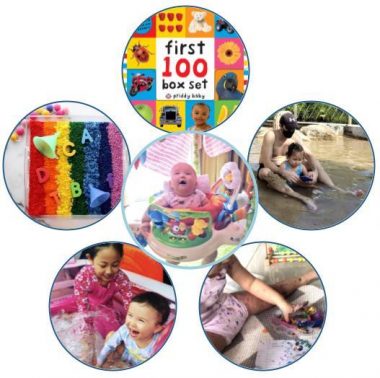How We Approach Teaching and Learning With Our Daughter
Written by |

Once we started joining aromatic l-amino acid decarboxylase (AADC) deficiency communities, families began reaching out, offering support, and providing information. As our knowledge about the disorder grew, my wife and I began applying what we knew about education. Although we are teachers, we never sought to teach other families. Instead, we wanted to start discussions, because through sharing, we develop ideas and adapt to meet each of our specific needs.
My wife and I work full time. At the end of the day, when we return home, our motivation and patience take a noticeable dip. We want to spend the time being with our daughter, Rylae-Ann, and playing with her. We do not want to put our teacher’s hat back on.
When we try to do lessons with Rylae-Ann, she often is not compliant, which is actually a common complaint we hear from the parents of our own students.
Children react differently to different people and environments. Consider finding someone to help, and better yet, join the playing. We do.

Daddy and Rylae-Ann play while singing songs, moving, and learning about animals. (Courtesy of Richard E. Poulin III)
Play is the highest form of research
Introduce your child to new people, expose them to different environments, and let them observe other children. Do this slowly, and reassure them to help manage their anxiety. Consider finding a tutor, teacher, family member, or friend who can consistently dedicate time to teaching.
Create activities that support your child. There are no “must-do” activities. Instead, think of approaches to teaching children with AADC deficiency.
We developed our play-based learning by creating activities that are related to developing multiple areas. The activities were designed to be adapted to the objectives. Instead of having specific activities, we would just play and be mindful of the approaches. The activities can be beneficial for children both pre- and post-gene therapy.
The areas we address in our activities to support Rylae-Ann include:
- Fine motor skills: focusing on small and fine-tuned movements
- Gross motor skills: focusing on large movements
- Physical therapy: physical activities to build muscle and movement
- Speech: improving communication
- Occupational therapy: tasks related to life
We combined areas to expand results and maximize our time, since we are working with so many areas. For example, we use fine motor skills to learn phonics, objects, actions, colors, emotions, and family. Also, we can sing songs during physical movements in a game that has speech objectives.
Combining what we know from using inquiry-based education and the Montessori method in our teaching, and adapting and modifying it for our child’s needs, we had an overarching approach to design our activities. It was essential to create fun and beneficial activities related to learning objectives. Activities must be adapted and modified to meet our child’s needs. When possible, incorporate multiple senses to create multisensory learning (touch, hearing, sight, taste, and smell) experiences when you play.
Our current goal while we play is to advance our daughter’s communication skills. Communication is not just words from our mouths. It is how we express ourselves — and this is different for everyone.
Speech therapy, developing words from our mouth, begins with eating and developing the muscles necessary for speech. So, while we play, we have speech objectives, such as identifying toy animals. We will take the animals and have them play in cold and warm water. We will support Rylae-Ann in her physical movements, such as picking up the animals and placing them into the water to play. Even though many children with AADC deficiency can’t speak, they do understand and hear us.

Involve others to create supportive activities that expose children to several senses while addressing multiple areas of support. (Courtesy of Richard E. Poulin III)
Consider incorporating supportive strategies that address multiple areas as you play and create activities. Be sure you adapt and modify activities so that your child can be successful while having fun. Use the idea of the activity and a framework, and change it to match your objectives. Finally, involve others to maximize the support and ensure that you remain an effective parent. This approach is supportive to all children, but it is especially advantageous for children in our rare disease community.
What supportive activities have you tried with your AADC-deficient child? Please share in the comments below and with others in our community.
***
Note: AADC News is strictly a news and information website about the disease. It does not provide medical advice, diagnosis, or treatment. This content is not intended to be a substitute for professional medical advice, diagnosis, or treatment. Always seek the advice of your physician or other qualified health provider with any questions you may have regarding a medical condition. Never disregard professional medical advice or delay in seeking it because of something you have read on this website. The opinions expressed in this column are not those of AADC News or its parent company, Bionews, and are intended to spark discussion about issues pertaining to aromatic l-amino acid decarboxylase deficiency.







Leave a comment
Fill in the required fields to post. Your email address will not be published.